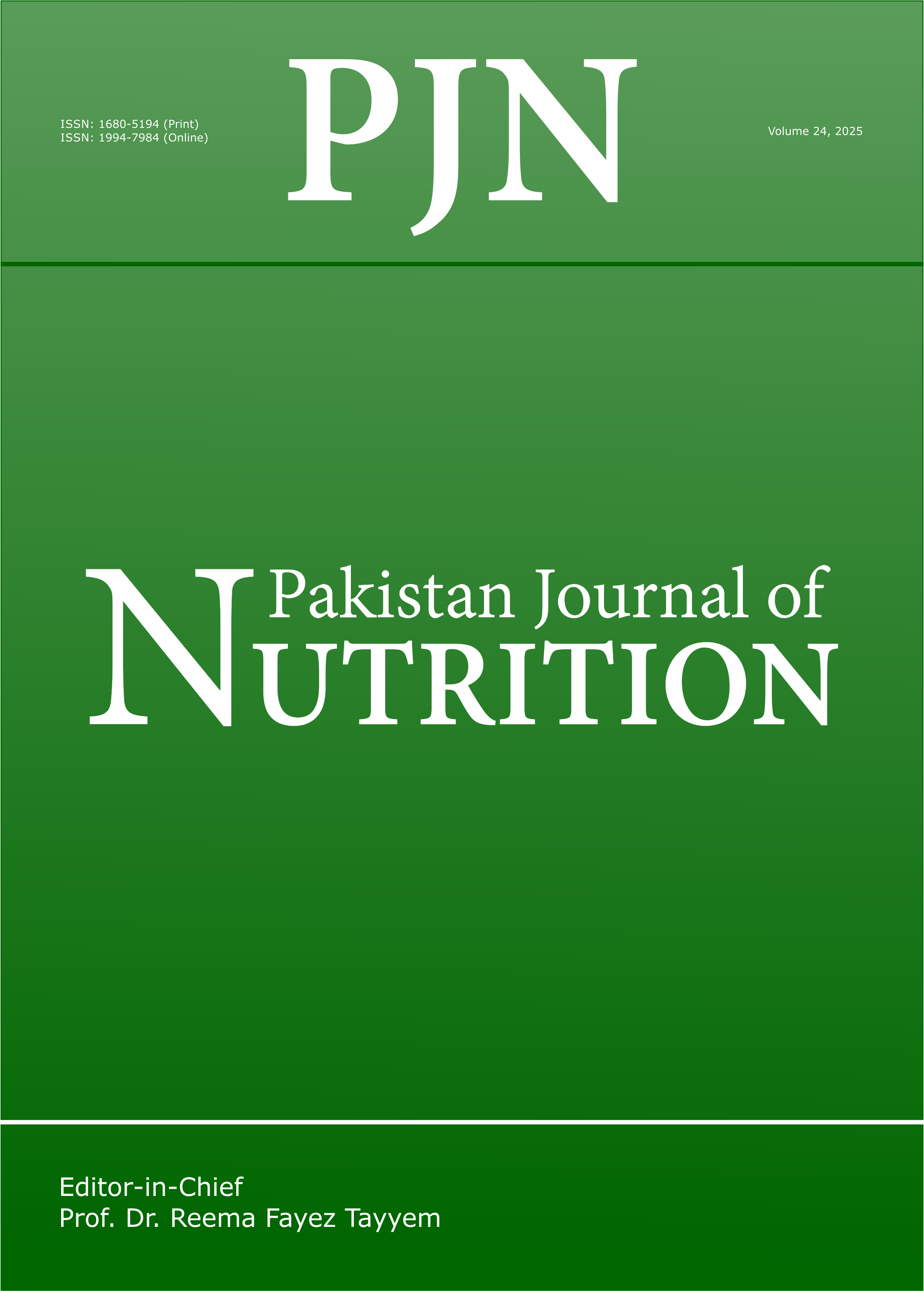Effect of Mixed Feeding Regime on Litter Performance Traits of Rabbit Does
DOI:
https://doi.org/10.3923/pjn.2008.594.596Keywords:
Does, litter traits, mixed feedingAbstract
Twenty-four clinically sexually mature New Zealand white rabbits consisting of (4 buck and 20 does) were used to study the effect of concentrate and Talinum triangulare combinations by breeding does during pregnancy on litter performance traits. The treatments comprised the following concentrate and Talinum triangulare combinations (%) respectively: (1) 20:80, (2) 40:60, (3) 60:40, (4) 80.20.. A total of 150 g/day was offered to the does during pregnancy. Average litter sizes at birth and weaning and litter weaning weight were similar (P > 0.05) between 40:60 and 60:40 concentrate and forage combinations, but, they differed significantly (P < 0.05) from 20:80 and 80:20 concentrate and forage combinations. However, 20:80 diets differed significantly (P < 0.05) from 80:20 diet combinations. Average litter weight gains (0-35 days) for the various concentrate and forage levels were 2054.40 ± 14.25 g (20:80), 2270.74 ± 18.85 g (40:60), 2314.40 ± 24.64 g (60:40) and 1485.24 ± 19.30 g (80:20). Mortalities were not significantly different (P > 0.05) between diets. From the economic stand point therefore, diet with 60:40 concentrate and forage combinations could be considered optimum, based on result on litter sizes, litter weight at weaning and mortality.
Downloads
Published
Issue
Section
License
Copyright (c) 2008 Asian Network for Scientific Information

This work is licensed under a Creative Commons Attribution 4.0 International License.
This is an open access article distributed under the terms of the Creative Commons Attribution License, which permits unrestricted use, distribution and reproduction in any medium, provided the original author and source are credited.

